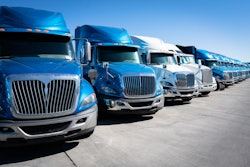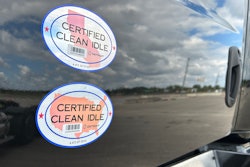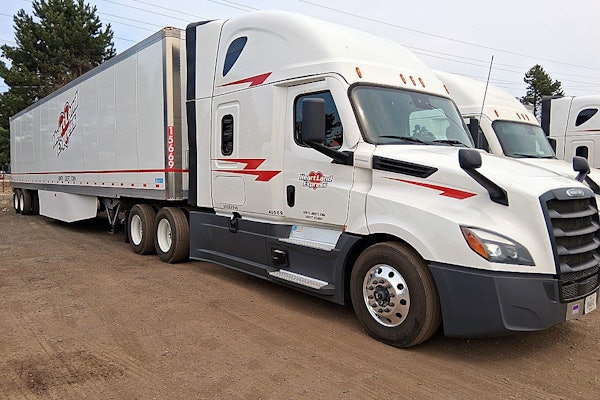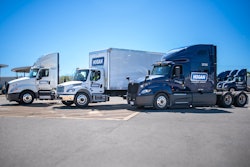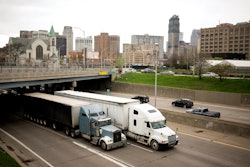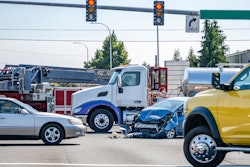New York is hoping state lawmakers follow their New England peers in Massachusetts and Maryland in adding some flexibility into the state's adoption of the Advance Clean Trucks rule, which when into effect Jan. 1.
The rule, originating from California but adopted 10 other states, requires manufacturers to achieve a certain increasing level of electric truck sales as a percentage of their overall sales. Other states have also sought delays, and ACT's mathematical formula has already proven a crippling figure just four months into New York's implementation of the rule.
"I've never sold an electric truck," said Russel Pedrick of Lucky's Trailer Sales with Dimmick Group Peterbilt's Albany location. "Until we sell and electric truck, we can't sell any diesel. I haven't ordered a diesel truck this year for my customers."
In 2024, the sale of medium-heavy-duty combustion engine trucks declined by over 80% in California, according to the Safe Roads Coalition.
An average of four zero-emission Class 8 trucks have been sold in New York each month this year. The state needs a roughly a 600% increase in ZEV sales just to meet ACT the requirement.
Pedrick said his dealership has had an electric demo unit for more than a year and most customers note they need far more range than what a battery electric truck can provide. One local customer, he said, had to have the truck towed during a demo because the battery died sooner than the estimated range.
"I am personally scared that, if this doesn't change, I could lose my job because I don't have any trucks to sell," he added.
The Trucking Association of New York (TANY) is advocating that lawmakers take a more flexible approach and embrace a number of “bridge solutions” that reduce emissions and have more robust infrastructure.
"In New York, it is really difficult to get power," said Tommy Kharieh, owner of Walton Hauling, whose fleet of more than 200 trucks services the film, TV and theatre industries in the state. He said he's received quotes of more than $1 million for the installation of a DC fast charger powerful enough to charge just three trucks and a build time of more than a year.
Electric infrastructure rollout in New York has been slower than slow. The state has not installed a single publicly available heavy duty charger since it adopted ACT in 2021, "and is no closer now than it was four years ago," said TANY president Kendra Hems.
Congress is considering legislation that would repeal the federal waivers that allowed 11 states to adopt their electric vehicle mandates.
A lack of existing ZEV infrastructure for the foreseeable future, Hems said, should be pushing bridge solutions – like biofuels, renewable diesel and natural gas – to the forefront, allowing the state to reduce emissions while a zero emissions infrastructure matures.
Kharieh's fleet was among the first in the state to operate on renewable diesel – "A great way to be green," he added.
New York City's municipal fleet of 12,500 heavy-duty and off-road vehicles operates exclusively on renewable diesel as of late last year. The transition will prevent 162 million pounds of global carbon dioxide emissions from entering the air every year. Since the start of the transition in September 2023, renewable diesel has replaced more than 12 million gallons of fossil diesel, and already has been used to power the city’s fleet of garbage trucks, ambulances, work trucks, emergency generators, and more. Renewable diesel can reduce life cycle greenhouse gas emissions by up to 60% compared to regular diesel, all while meeting the same operating specifications as regular diesel.
New York State Energy Coalition CEO Rocco Lacertosa noted growth in the biofuel space, adding additional benefits of biofuels is they are made from inputs that previously were considered waste. "The real beauty of biofuels is that they're simple to use," he added.
Renewable diesel, for example, is a drop in solution that requires no changes or upfits to a standard deisel engine. Biofuels can require some aftermarket accommodations.
The state faces an uphill battle in its quest for reduced emissions unless it softens its strong-arm implementation of battery electrics, Hems said. More than half (58%) of commercial trucks are powered by current generation clean diesel technologies, but due to a high cost of acquisition for ZEV trucks, Pedrick said he's seeing more local motor carriers keep older trucks on the road for longer, "which is having an adverse effect."
“What we have yet to talk about, is how our current sustainability initiatives are being impacted by this regulatory framework. Sixty trucks on the road today equals the output of one truck in 1988 – CARB Standard Certified Clean Idle Trucks, as well as alternative fuels and technologies such as renewable diesel, CNG, hydrogen, hybrid, and telematics are all prominent throughout the industry, and they are essential tools to continue this progress on an achievable timeline," Hems said. "One solution is not the answer, they all are.”






